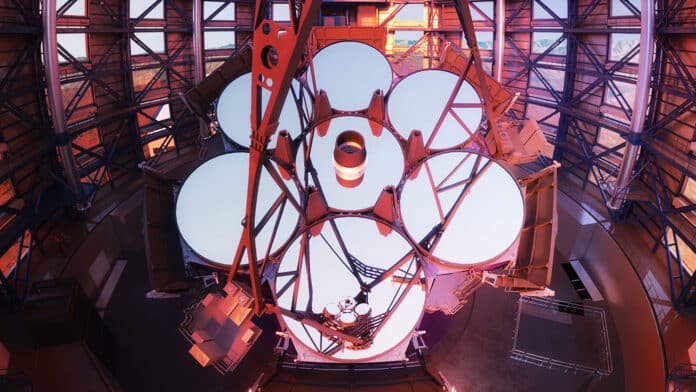The Giant Magellan Telescope, the most powerful telescope ever engineered using the world’s largest mirror, announced that it has secured a $205 million investment from its international consortium to accelerate construction.
The giant 12-story telescope will allow astronomers to see farther into space with more detail than any other optical telescope before. The Giant Magellan Telescope will have ten times the light collecting area and four times the spatial resolution of the James Webb Space Telescope (JWST). In addition, it will be up to 200 times more powerful than existing research telescopes.
Combined with revolutionary spectrographs and high contrast cameras, this unprecedented angular resolution will work in direct synergy with JWST to empower new scientific discoveries. The Giant Magellan Telescope will be the next step in studying the physics and chemistry of the faintest light sources in space that JWST will identify.
This includes searching the atmospheres of potentially habitable planets for life, studying the first galaxies that formed in the Universe, and finding clues that will unravel the mysteries of dark matter, dark energy, black holes, and the formation of the Universe itself.

“We are working with some of the brightest engineers and scientists at leading research institutions around the globe,” said Dr. Walter Massey, Board Chair of Giant Magellan Telescope. “The recent contributions from our investing partners in the Giant Magellan Telescope are collectively pushing the boundaries of astronomy, making the future a reality, and allowing us to answer some key science goals, including ‘Are we alone in the Universe.'”
The Giant Magellan Telescope has already achieved significant construction progress over the last few years. Six of seven primary mirror segments have been cast in Tucson, Arizona. The third primary mirror segment has completed its 2-year polishing phase and is undergoing final testing. Construction of a 40,000-square-foot facility in Rockford, Illinois, to manufacture the telescope structure is complete.
The production of the telescope’s first adaptive secondary mirror is underway in France and Italy. The site in Chile, which sits 8,255 feet above sea level, is primed for the next stage of construction and pouring of the foundation.
The latest investment marks one of the largest funding rounds for the telescope since its founding and includes leading commitments from the Carnegie Institution for Science, Harvard University, the São Paulo Research Foundation (FAPESP), The University of Texas at Austin, University of Arizona, and the University of Chicago.
